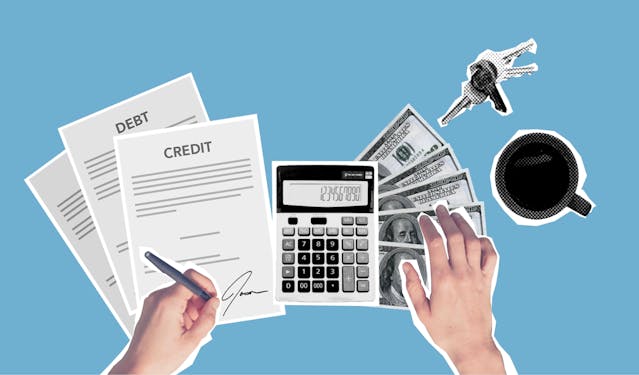Debt can be a heavy burden to carry, both financially and emotionally. Whether it’s credit card debt, student loans, or medical bills, being in debt can feel overwhelming and never-ending. However, with a solid debt repayment plan, you can take control of your finances and work towards a debt-free future.
In this article, we’ll discuss the importance of having a debt repayment plan and provide tips for building one that works for you.
Why You Need a Debt Repayment Plan
Having a debt repayment plan is crucial for several reasons:
Debt Consolidation
A debt repayment plan allows you to consolidate your debts into one manageable monthly payment. This can help you save money on interest and make it easier to keep track of your payments.
Read more on Understanding Debt Consolidation.
Financial Freedom
Being in debt can feel like a never-ending cycle, with interest piling up and minimum payments barely making a dent. With a debt repayment plan, you can take control of your finances and work towards financial freedom.
Debt Management
A debt repayment plan helps you manage your debts effectively. By creating a budget and setting a timeline for paying off your debts, you can stay on track and avoid falling further into debt.
Credit Repair
Having a debt repayment plan can also help improve your credit score. By consistently making payments and reducing your debt, you can show lenders that you are responsible and capable of managing your finances.

Tips for Building a Debt Repayment Plan
Now that you understand the importance of having a debt repayment plan, here are some tips for building one that works for you:
1. Assess Your Debts
The first step in building a debt repayment plan is to assess your debts. Make a list of all your debts, including the creditor, interest rate, and minimum monthly payment. This will give you a clear picture of your financial situation and help you prioritize which debts to pay off first.
2. Set a Realistic Timeline
Once you have a list of your debts, set a realistic timeline for paying them off. Consider your income, expenses, and any other financial obligations you have. It’s important to be realistic and not set a timeline that is too aggressive, as this can lead to frustration and failure.
3. Create a Budget
A budget is a crucial part of any debt repayment plan. It allows you to see where your money is going and where you can make cuts to free up more funds for debt repayment. Be sure to include all your expenses, including groceries, rent/mortgage, utilities, and any other necessary expenses.
Read more tips on how to how to create a sound budget here.
4. Prioritize Your Debts
When creating a debt repayment plan, it’s important to prioritize your debts. Consider paying off high-interest debts first, as they will cost you more in the long run. You can also prioritize debts with smaller balances to give yourself a sense of accomplishment and motivation as you pay them off.
5. Consider Debt Consolidation
If you have multiple high-interest debts, it may be worth considering debt consolidation. This involves taking out a loan to pay off all your debts, leaving you with one monthly payment and a potentially lower interest rate. However, be sure to do your research and compare interest rates and fees before choosing a consolidation option.
6. Negotiate with Creditors
If you’re struggling to make payments, don’t be afraid to reach out to your creditors and negotiate. They may be willing to lower your interest rate or work out a payment plan that is more manageable for you. It’s always worth asking, and it can make a significant difference in your debt repayment journey.
7. Consider Credit Counseling
If you’re feeling overwhelmed and unsure of where to start with your debt repayment plan, consider seeking credit counseling. A credit counselor can help you create a budget, negotiate with creditors, and provide valuable resources and advice for managing your debts.
8. Stay Motivated
Paying off debt can be a long and challenging journey, so it’s essential to stay motivated. Set small goals for yourself and celebrate each milestone along the way. You can also find support from friends and family or join online communities of people working towards financial freedom.
Real-Life Examples of Successful Debt Repayment Plans
The Snowball Method
The snowball method involves paying off your smallest debts first, then using the money you were paying towards those debts to pay off larger debts. This method can provide a sense of accomplishment and motivation as you see your debts decreasing.
The Avalanche Method
The avalanche method involves paying off your highest-interest debts first, then moving on to lower-interest debts. This method can save you money on interest in the long run, but it may take longer to see significant progress.
The Debt Consolidation Method
As mentioned earlier, debt consolidation involves taking out a loan to pay off all your debts, leaving you with one monthly payment and potentially lower interest rates. This method can make it easier to manage your debts and save you money on interest.
Who Can Help You Build a Debt Repayment Plan?
If you’re feeling overwhelmed and unsure of where to start with your debt repayment plan, consider seeking help from a financial advisor. They can provide personalized advice and resources to help you create a plan that works for your specific financial situation.
Final Thoughts
Debt can feel like a never-ending cycle, but with a solid debt repayment plan, you can take control of your finances and work towards a debt-free future. Remember to assess your debts, set a realistic timeline, create a budget, and stay motivated. With determination and the right resources, you can achieve financial freedom and improve your credit score.




























